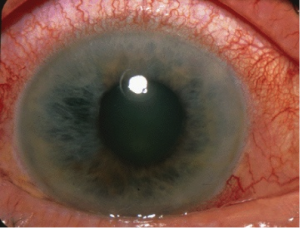Glaucoma – Introduction and Description
Glaucoma is a condition in which damage of optic nerve occurs gradually. Glaucoma is developed due to the high pressure inside the eyes. It is mostly hereditary and identified only during the later stage of life. The function of the optic nerve is to transmit images of the objects seen to the brain. If untreated, glaucoma can cause permanent vision loss. Glaucoma cannot be diagnosed easily as it does not show any pain or symptoms of high eye pressure. Hence, it is recommended to consult an ophthalmologist, so that diagnosis of glaucoma is possible before losing the eye sight permanently.
People suffering from glaucoma will start losing the peripheral vision slowly. If left untreated, then the patient will not see the objects on the sides. The patients will feel that they are viewing the objects across a tunnel. Slowly, the central vision also starts diminishing causing complete loss of vision. People above 40 years of age and have the family history of this condition should consult an ophthalmologist to conduct an eye examination. Thorough eye examination should be performed once in every one or two years. It is advised to visit the ophthalmologist more often, if there is a family history, risk of other eye condition, or diabetes.

Image credit: en.wikipedia.org
Reason for High Eye Pressure
The high eye pressure is caused when the fluid (aqueous humor) in the eye is not circulating properly in the front part. In normal condition, aqueous humor flows across the eye through a mesh-like channel. Glaucoma is caused due to the blockage of this channel. The real reason for the blockage of this channel is not known. According to physicians, the condition is inherited from parents to the offspring. Other possible reasons for developing glaucoma are chemical or physical injuries of the eye, severe infection, inflammation, blocks in blood vessels of the eye, and eye surgery conducted to fix another eye condition.
Types of Glaucoma
There are different types of glaucoma such as:
- Angle-closure Glaucoma: This condition is also known as chronic, acute angle-closure, or narrow-angle glaucoma. This type is rarely seen. It is caused by the sudden increase of eye pressure. Sudden increase of pressure is caused by the blockage of the drainage angle of the eye. Poor drainage of fluid is caused by the blockage of narrow angle between the cornea and iris. People with hyperopia and Asian origins are at risk of developing this type of glaucoma. Narrow angle glaucoma has to be treated immediately, but the patients will not experience any symptoms.
- Open-angle Glaucoma: Open-angle glaucoma is also known as wide-angle glaucoma. This type of glaucoma is quite common. Even though the drainage angle is not blocked, the trabecular meshwork will get blocked gradually which in turn stops the drainage of the fluid. This increases the eye pressure and gradually damages the optic nerve.
- Normal-tension Glaucoma: The normal eye pressure is below 21mmHG. In this case, the eye pressure will be normal, but the optic nerve will get damaged and experience narrowed vision on the sides. This condition may be caused by the sensitivity of the optic nerve or the optic nerve is not receiving sufficient blood supply. Reduced supply of blood to the optic nerve may be due to the atherosclerosis or any other similar condition that limits the blood supply. Treatment for normal-tension glaucoma is similar to that of open-angle glaucoma.
- Secondary Glaucoma: Secondary glaucoma is caused by any other eye disease or condition or injury.
- Congenital Glaucoma: This is a rare condition seen in new born babies and children. Congenital glaucoma causes complete blindness, if it is not diagnosed and left untreated.